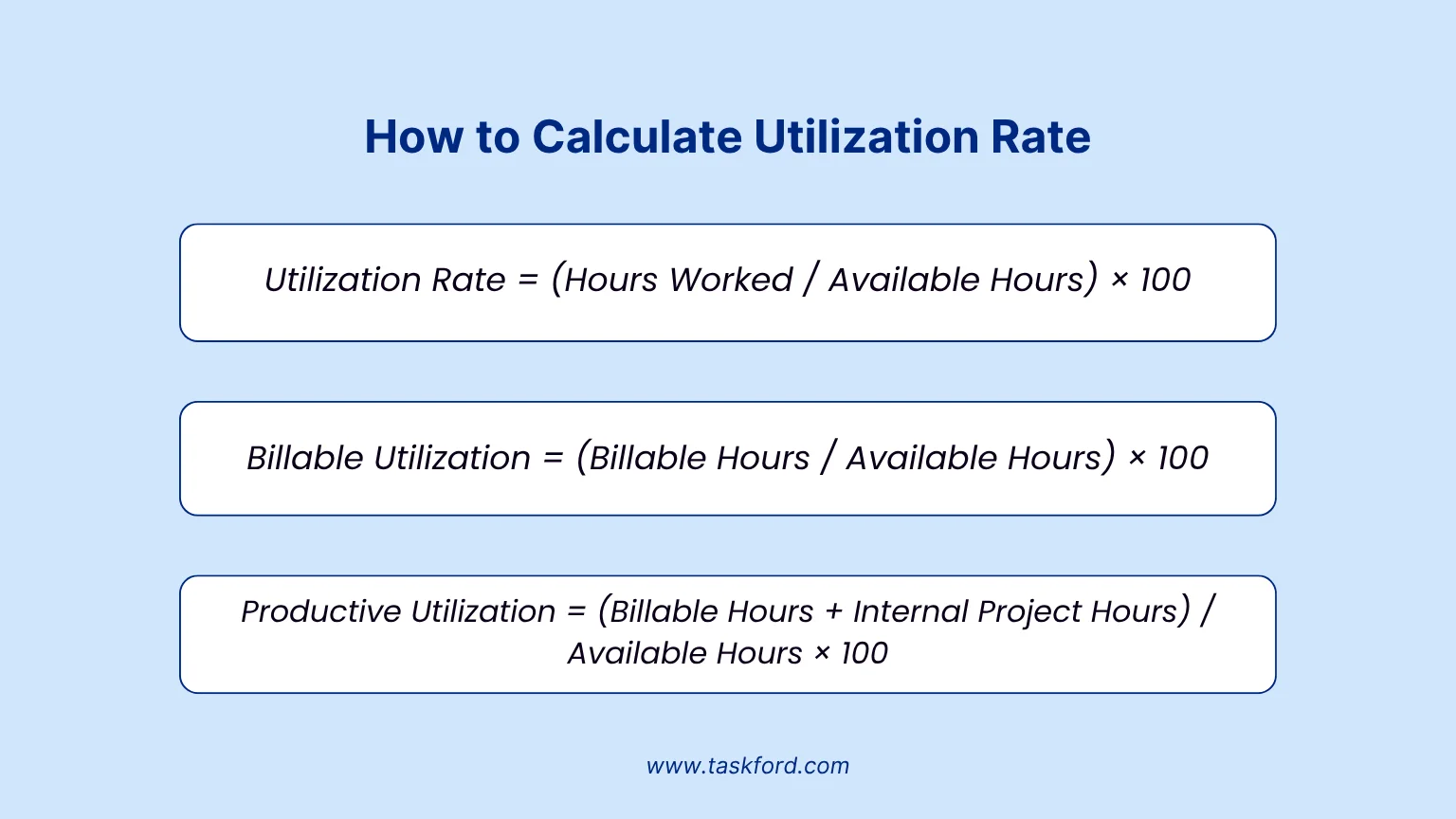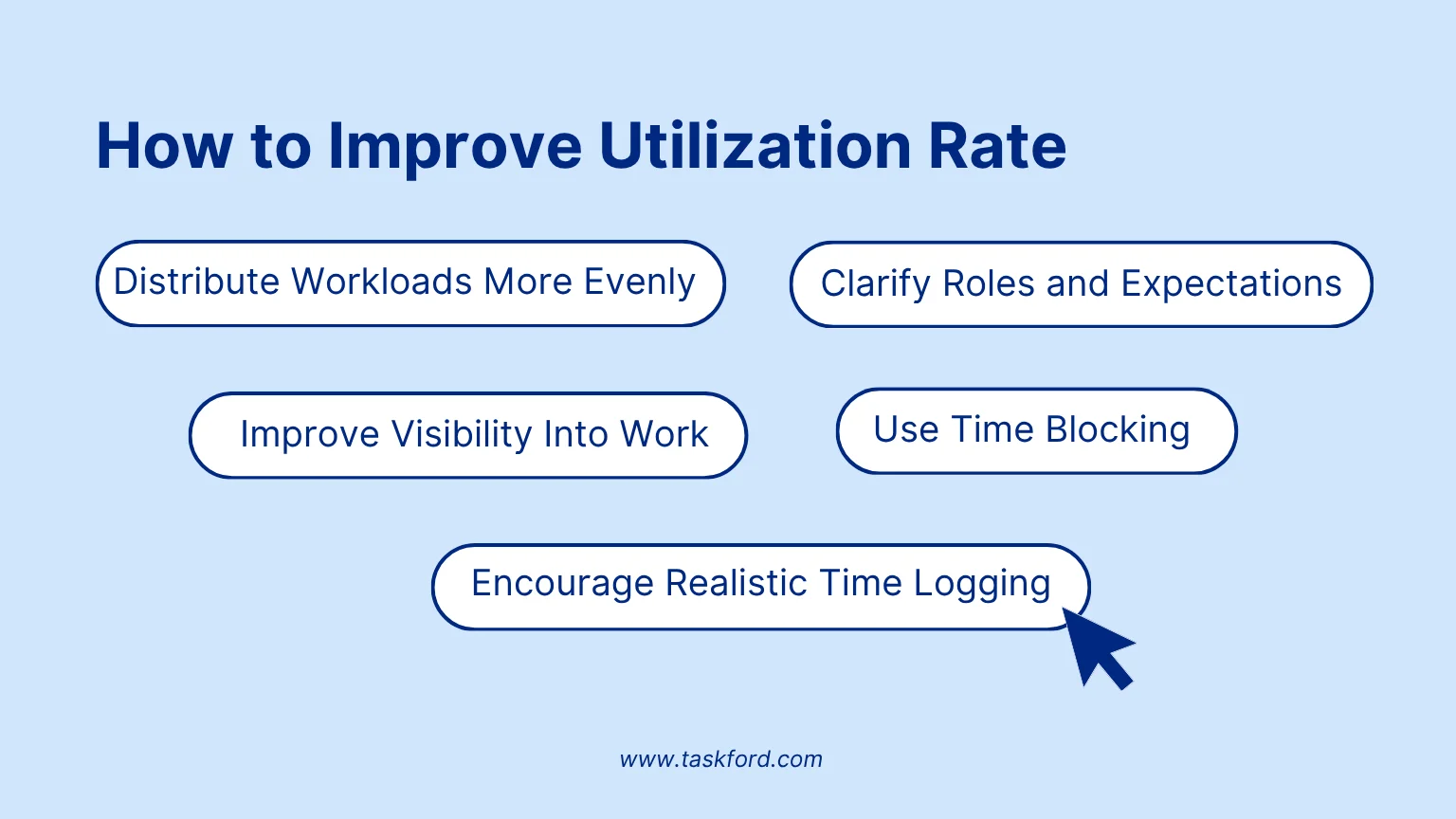What Is Utilization Rate? How to Calculate and Interpret It Correctly
Learn what utilization rate is, how to calculate it, and how to interpret it to optimize team productivity and project planning without overworking your team.
Understanding how your team spends its time is one of the simplest ways to improve how work gets done — yet it’s something many teams overlook. Utilization rate gives you a straightforward view of how much of a person’s or team’s available time is actually spent on meaningful work.
It’s often misunderstood as “the higher, the better,” but that’s not always true. A balanced utilization rate helps you plan workloads realistically, prevent burnout, and spot capacity issues before they turn into delivery problems.
In this guide, we’ll break down what utilization rate really means, how to calculate it with confidence, and how to interpret the numbers in a way that leads to healthier, more effective project planning.
What is a Utilization Rate?
A utilization rate is a simple measure of how much of a person’s or team’s available working time is actually spent on productive tasks. It shows whether your resources are being underused, overloaded, or working at a healthy pace.
In practical terms, utilization compares hours spent on work to the total hours someone is available. This can include billable work, project tasks, internal initiatives, or any activity that contributes to team goals.

It helps you answer common questions like:
- Do we have enough capacity for new projects?
- Is someone consistently overextended?
- Are billable teams using their time efficiently?
- Are internal teams balanced across priorities?
By understanding this metric, you gain a clearer picture of team workload, capacity, and where adjustments may be needed to keep projects running smoothly.
Read also: What is Capacity Planning? - Key Terms and Steps You Can Apply Right Away
Why Utilization Rate Matters in Project and Resource Management
A clear understanding of your team’s utilization rate is essential for planning work in a realistic and healthy way. This metric helps you see whether people have the bandwidth for new tasks, if deadlines are achievable, or if certain roles are becoming overloaded. It also gives early signals when capacity issues may affect delivery, allowing you to adjust timelines or redistribute tasks before problems grow.
From a resource management perspective, it becomes a reliable indicator of whether your staffing levels match the actual workload. When the number is consistently low, it may point to underused skills or an oversized team. When it trends too high, it often suggests that people are stretched thin and may require additional support.
Overall, this measurement helps maintain balance, ensuring work is distributed fairly, projects stay on track, and teams can perform at a sustainable pace.
Types of Utilization
When looking at how effectively a team uses its time, it’s helpful to understand that not all utilization is the same. Different types of measurement highlight different aspects of the , productivity, and capacity.
1. Billable Utilization
This focuses on hours that can be invoiced to clients. It’s especially important for agencies, consulting teams, or any service-based operation. A healthy percentage here shows how much of a person’s time directly contributes to revenue.
2. Productive (or Total) Utilization
This looks at all meaningful work — both billable and internal tasks, such as planning, documentation, or team activities. It gives a more complete picture of how a person or team contributes to overall goals.
3. Capacity Utilization
Instead of focusing on individuals, this level examines how a full team or department uses its available hours. (For more on optimizing this, check out our guide on resource utilization).
It’s useful for understanding whether there’s room to take on new projects or if workloads need to be redistributed.
Each type offers a different perspective, and using them together helps you build a more accurate view of team workload and performance.
How to Calculate Utilization Rate
Calculating this metric is straightforward once you understand the components involved. At its core, you’re comparing the time someone actually spends on work to the total hours they’re available.

- Basic Formula
This is the most common way to understand how much capacity is being used during a given period:
Utilization Rate = (Hours Worked / Available Hours) × 100
- Hours Worked: Any productive time, including project tasks, collaboration, or support work
- Available Hours: The total scheduled hours someone is expected to work (e.g., 40 hours per week)
This formula works for most teams and provides a simple starting point to understand workload balance.
2. Billable Utilization Formula
For service-based teams that work directly with clients, it’s important to measure the portion of time that can be invoiced:
Billable Utilization = (Billable Hours / Available Hours) × 100
This helps determine how efficiently client-facing roles contribute to revenue. It also highlights when individuals might have too much or too little billable work assigned.
Read Also: Billable Hours - Examples, Rules, and Best Practices
3. Productive Utilization Formula
Some work doesn’t involve clients but still moves projects forward, such as documentation, research, planning, and team meetings. To capture a fuller picture of someone’s contribution, this variation is useful:
Productive Utilization = (Billable Hours + Internal Project Hours) / Available Hours × 100
This broader view is especially helpful for cross-functional teams where not all valuable tasks are billable.
Practical Examples
Seeing the numbers in action makes it much easier to understand how this measurement works. Below are a few simple scenarios that show how different teams and roles might interpret their results.
Example 1: Small Team or Department
Scenario: A three-person operations team has a combined availability of 120 hours per week. Together, they log 96 hours of productive work.
Calculation: 96 ÷ 120 × 100 = 80%
Interpretation: At 80%, the team is working at a healthy pace, but they may have limited room to take on additional projects without adjusting priorities.
Example 2: Billable vs. Non-Billable Comparison
Scenario: A consultant has 40 available hours.
- Billable hours: 30
- Internal project hours: 5
Billable measurement: (30 / 40) × 100 = 75%
Productive measurement: (30 + 5) / 40 × 100 = 87.5%
Interpretation: The consultant is contributing strongly to client work while still supporting internal initiatives. However, anything above 85–90% for long periods may signal that the workload is becoming tight.
How to Interpret the Utilization Rate Correctly
Understanding the percentage alone isn’t enough—what really matters is knowing what that number means for your team’s health and project outcomes. A high or low value can signal very different things depending on the type of work, team structure, and overall workload patterns.
1. Why 100% Isn’t the Goal
Working at full capacity may look efficient on paper, but it’s rarely sustainable. When someone is booked every hour, there’s no room for unexpected tasks, learning, or collaboration. Over time, this can lead to delays, lower quality of work, and burnout.
2. Healthy Ranges Are Different for Each Team
- Creative and knowledge work: Often 60–75% is ideal, leaving space for thinking, reviews, and coordination.
- Operational or structured work: Slightly higher levels can be realistic, as tasks are more predictable.
- Client-facing roles: Billable expectations are higher, but still benefit from some flexibility.
Looking at the nature of the role helps you determine whether the percentage reflects a healthy rhythm or potential strain.
3. What a Low Percentage Might Mean
Lower levels aren’t necessarily a problem — it depends on the team’s goals. They may indicate:
- Underused skills
- Not enough project work in the pipeline
- A mismatch between staffing and demand
- Opportunities for training or cross-functional support
If low values appear consistently, it may signal that work needs to be redistributed or planned more effectively.
4. What a High Percentage Might Mean
Persistent high levels often point to:
- A heavy workload with limited breathing room
- Increased risk of delays
- Roles are becoming overdependent on a single individual
- Potential burnout if the pattern continues
Short bursts are normal; long-term patterns may require action.
5. Look at Trends, Not Just One Snapshot
A single measurement only shows what’s happening right now. Tracking patterns over weeks or months gives a more truthful view. It helps you identify seasonal peaks, recurring bottlenecks, and areas where small adjustments can make a big difference.
How to Improve Utilization Rate (Without Overworking Teams)
Improving how your team uses its time doesn’t mean pushing people to their limits. The goal is to create a healthier, more efficient workflow—not to fill every hour. Here are approaches that help sustainably raise productivity.

1. Distribute Workloads More Evenly
Uneven task assignments are one of the biggest causes of both low and high capacity usage. Reviewing upcoming work as a team makes it easier to move tasks around, relieve bottlenecks, and prevent certain roles from becoming overloaded.
2. Clarify Roles and Expectations
When responsibilities aren’t clear, people often spend extra time figuring out what to do next. Clear owndership of tasks and outcomes helps everyone stay focused and reduces time lost to coordination or confusion.
3. Improve Visibility Into Work
Teams work more efficiently when they can see what’s coming. A shared view of tasks, schedules, and priorities helps people plan their time, reduces duplicated effort, and makes handoffs smoother across departments.
4. Use Time Blocking for Better Focus
Setting aside structured blocks for deep work helps team members avoid constant context-switching. Even small adjustments like grouping similar tasks together can create more meaningful working hours.
Read Also: Time Blocking for Teams: A Proven Method to Avoid Distractions.

5. Encourage Realistic Time Logging
Accurate data is essential. When people record their working hours honestly, it becomes easier to identify what takes the most time, where improvements can be made, and which tasks may need support or process changes.
![]()
Conclusion
Understanding and managing utilization rate is key to running efficient, sustainable teams. By calculating this metric, interpreting it correctly, and taking steps to improve it, you can ensure that workloads are balanced, projects stay on track, and your team avoids burnout. Remember, it’s not about pushing for 100% all the time — it’s about creating a healthy, productive environment where time is used wisely, and work feels manageable. Keep an eye on the trends, and make adjustments that support both productivity and well-being.
You May Also Like
- Track Billable hour - Tips and Tricks for Accurate Tracking.
- 5 Best Billable Hours Trackers to Maximize Time and Profitability in 2026.
- Billable Hours Chart - How to Easily Track Time
Subscribe for Expert Tips
Unlock expert insights and stay ahead with TaskFord. Sign up now to receive valuable tips, strategies, and updates directly in your inbox.